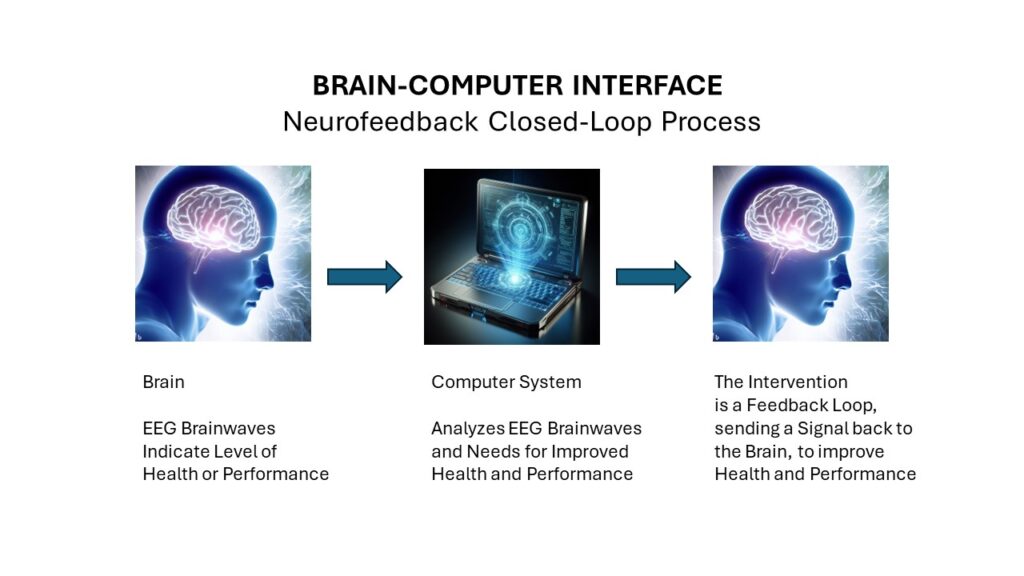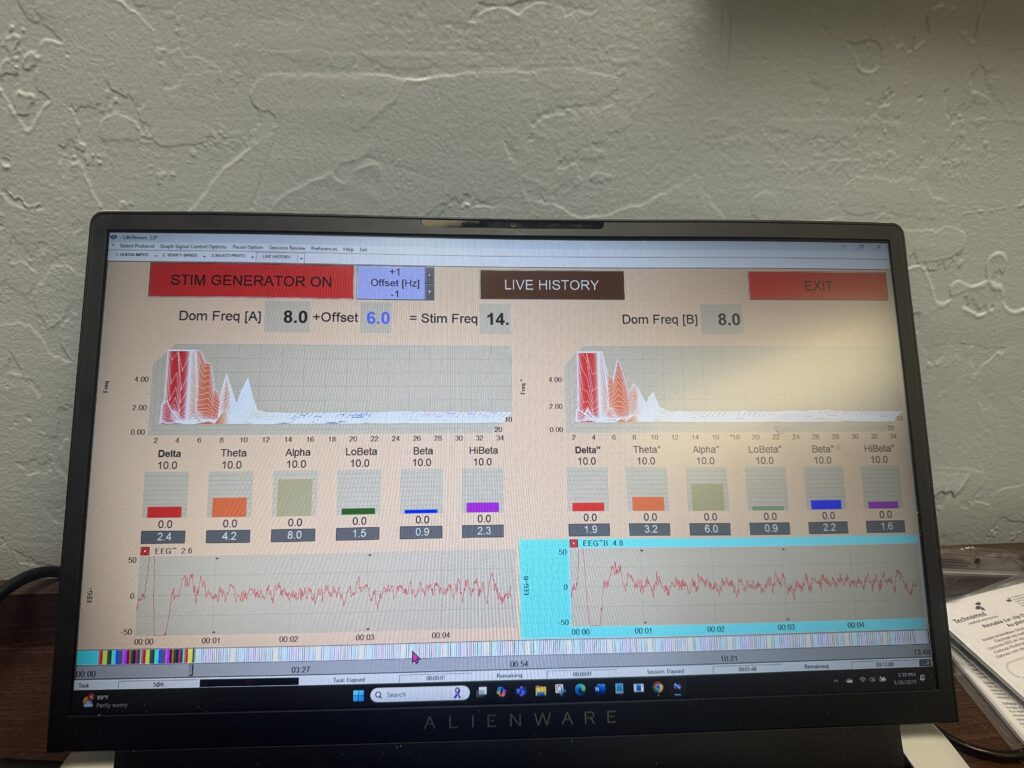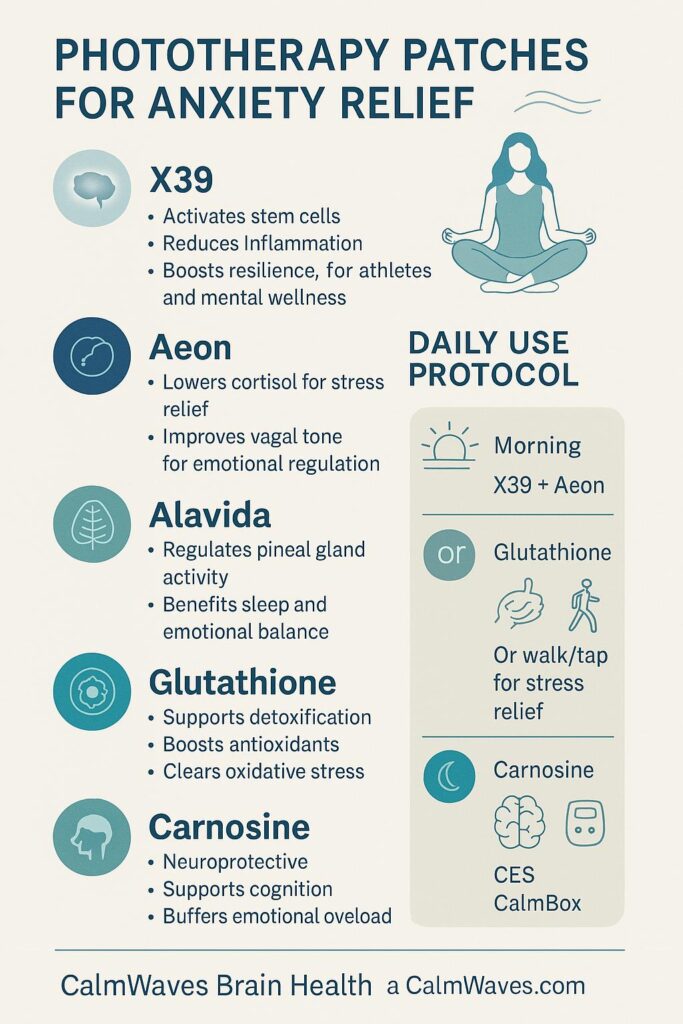How Direct Neurofeedback Helps with ADHD Symptoms
Unlocking Focus, Calm, and Cognitive Clarity in a Distracted World
Introduction: Rethinking ADHD
In today’s high-stimulation world, attention is currency—and for people with ADHD, that currency is often in short supply. The constant mental swirl, impulsivity, emotional overreaction, forgetfulness, and chronic underachievement can be frustrating not just for the individual, but for everyone around them.
Medications like stimulants can help. So can behavioral strategies. But for many, these approaches fall short—or come with side effects, resistance, or diminishing returns over time.
There’s a new frontier gaining momentum in the treatment of ADHD: Direct Neurofeedback (DNF). Unlike traditional neurofeedback that requires concentration and active participation, DNS is fast, passive, and incredibly promising. And for many individuals—children, teens, and adults alike—it’s helping quiet the chaos, unlock clarity, and create change where nothing else has worked.

What Is Direct Neurofeedback?
Direct Neurofeedback (also called low-energy neurofeedback, microcurrent neurofeedback, or in some systems, IASIS or LENS) is a passive form of brain training that sends imperceptible electromagnetic signals back into the brain to help it self-correct. It’s like a gentle mirror held up to the brain—reflecting its stuck patterns and helping it reset in real time.
Rather than trying to consciously “train” the brain over dozens of sessions, DNF uses micro-signals to disrupt maladaptive patterns and allow the brain to reorganize itself.
In most systems:
- The session is only a few minutes long
- Clients do not need to do or feel anything
- Improvements are often seen after 1–3 sessions
This is revolutionary for people with ADHD, who often struggle to sit still, focus, or engage with traditional forms of therapy.
How DNF Differs from Traditional Neurofeedback
Traditional EEG-based neurofeedback typically involves:
- 30–40 sessions
- Active participation (playing a game or watching a screen), relies on operant learning by the client.
- Slow, gradual change over time
DNF, on the other hand:
- Involves passive reception of low-level signals
- Sessions are often short (10–30 minutes)
- Noticeable effects can occur within just 1–3 sessions
- No active concentration or training required
For individuals with ADHD—especially those with emotional reactivity, fatigue, or difficulty staying on task—this low-effort approach opens the door to profound progress.

What DNF Does for the ADHD Brain
People with ADHD often experience brain-based issues in key areas:
- Dysregulated attention: Trouble focusing, especially on low-stimulus tasks
- Poor impulse control: Acting without thinking
- Emotional reactivity: Overwhelmed by minor stressors
- Sleep issues: Trouble falling or staying asleep
- Executive dysfunction: Struggling with planning, memory, time management
DNF appears to help recalibrate brainwave patterns, especially in the prefrontal cortex, anterior cingulate cortex, and limbic system—areas critical for emotional regulation, attention, and executive function.
Reported benefits include:
- Sharper focus
- Quicker transitions between tasks
- Greater calm
- Fewer emotional outbursts
- Better sleep
- Reduced anxiety
All without the side effects of medication, and often with long-lasting results.
What the Research Shows
Research into microcurrent neurofeedback and related forms (including IASIS, LENS, and traditional neurofeedback) has grown over the past 10 years.
Findings include:
- IASIS microcurrent neurofeedback improves attention, reduces impulsivity, and enhances sleep in adults and children with ADHD (multiple clinical reports).
- LENS neurofeedback is associated with improved executive functioning, mood regulation, and learning in neurodiverse populations.
- Traditional EEG neurofeedback is now considered a Level 1 “Best Support” treatment for ADHD by the American Academy of Pediatrics.
- A 2021 study showed microcurrent neurofeedback provided sustained symptom improvement after 10 sessions, with minimal side effects.
Much of the research points toward DNF’s ability to interrupt maladaptive brain patterns, increase neuroplasticity, and create space for the brain to “reset” its default settings.

ADHD and Academic Performance
For students with ADHD, school can feel like an uphill battle:
- Trouble focusing in class
- Forgetting assignments
- Difficulty organizing
- Test anxiety
DNF has been shown to improve working memory, task switching, reaction time, and mental flexibility—all critical for academic success.
Clients report:
- Faster homework completion
- Better test scores
- Less stress before exams
- Fewer teacher complaints
And because DNF also improves sleep, emotional regulation, and resilience under stress, students often find that learning becomes enjoyable again—not just tolerable.
DNF, CES, and Phototherapy: A Multi-Modal Approach
At CalmWaves Brain Health and Performance, we often combine DNF with:
- CES CalmBox Technology: Cranial Electrical Stimulation has been shown to reduce anxiety, improve sleep, and enhance focus by activating the parasympathetic nervous system.

- LifeWave Phototherapy Patches (X39, Aeon): Help reduce inflammation, enhance cellular repair, and support nervous system balance. Clients with ADHD often report enhanced calm, better energy, and faster post-stress recovery.

- Nutrition and Hydration: Clean eating, high protein intake, and stable blood sugar are essential for brain performance. Caffeine and sugar overuse (especially with ADHD meds) can worsen brain fog and overstimulation.
- Dual-N-Back Brain Games: Scientifically validated cognitive training that improves working memory and attention span. Free download on app store.
This comprehensive approach treats the brain not as a diagnosis, but as a living, adaptive system that can be nourished and upgraded.
What Clients Say
- “My son went from fighting me every morning to waking up calm and confident.”
- “I’ve tried every ADHD treatment. DNS is the only one that worked without side effects.”
- “After three sessions, my daughter was sleeping better and getting through her schoolwork without meltdowns.”
While every case is different, these experiences reflect a trend: fast, meaningful improvements in daily life.
How to Get Started with Direct Neurofeedback
Direct Neurofeedback is non-invasive, safe, and increasingly available through qualified providers. At CalmWaves, our approach includes:
- Cognitive baseline testing (Creyos)
- Targeted DNF treatment sessions (typically 10–20 total)
- Integration with CES, nutrition, coaching, and lifestyle interventions
Sessions are in-office, painless, and relaxing. Many clients report noticeable improvements within the first 3–5 sessions.
Final Thoughts: Hope for the Distracted Brain
ADHD is not a character flaw. It’s a brain state. And with the right tools, that brain can shift.
Direct Neurofeedback offers a new way forward—not through effort, but through gentle interruption and reset. By working with the brain’s natural rhythms, we help it come back online in a healthier, calmer, and more efficient way.
Whether you’re a parent desperate to help your child, or an adult who’s tired of living in a fog, DNS offers one word most ADHD treatments don’t: hope.
Dr. Douglas Cowan, Psy.D, LMFT
CalmWaves Brain Health and Performance
📧 newideas.net@gmail.com
📞 (661) 972-5953

